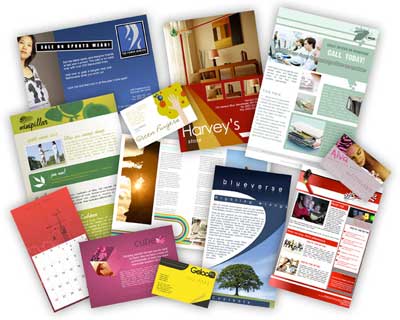Whether you’re a small business with a few employees or a large organization with many, chances are someone uses DTP for your marketing materials.
 DTP, or desktop publishing, is the collective name for most of the layout and design software used to make brochures, custom flyers, corporate publications and more. It might be used to create your catalogs, your company profile and your Internal health and safety documents. However, whatever it’s used for, the words included in the finished product are just as important as the graphics and layout. Here’s why.
DTP, or desktop publishing, is the collective name for most of the layout and design software used to make brochures, custom flyers, corporate publications and more. It might be used to create your catalogs, your company profile and your Internal health and safety documents. However, whatever it’s used for, the words included in the finished product are just as important as the graphics and layout. Here’s why.
How Do Words Affect DTP?
When you, an employee or a contractor lays out a piece of marketing collateral using DTP, there’s a good chance it will take many hours of work.
You’ll have to source images, decide on graphics and weave your corporate colors and logos throughout the document. You may need to add a table of contents, add page numbering, choose fonts and move everything around more than once.
While you’re doing all of that, you’re going to be adding text content to the piece―usually in your native language. It’s important that the words fit into the spaces allowed for them, whether you’re adding titles or text boxes. If text doesn’t fit on one page, you might duplicate it, and use an autoflow tool to take your text to the next page.
This is a very important part of the DTP process. You want to have enough space on the page, so nothing looks too crowded, but not so much that it looks too empty. In fact, getting what you want to say to work with the layout and design is just as big a part of the process.
How Does Translation Affect Those Words?
When you’ve spent hours developing the perfect marketing materials, tweaked your words to perfection and got everything just so, the last thing you want to do is have to make big changes.
However, when you translate words from one language to another, sometimes sentences or phrases become longer or smaller. Word size will most likely vary. Grammar is different. There are all kinds of changes that need addressing.
All of this means that it can be hard to get the same visual appearance and fit as you did when you did the original text in your native language. That could be a problem for your PDF or InDesign material.
How to Solve the Problem
One of the best ways to work around the problem of translated language and DTP marketing materials is to work with a company who has both graphic designers and translators.
When you have a deep understanding of what goes into designing pieces like these, you know how to make things work. Which is why you should always choose a company for your DTP project that not only wants to know what you want to say, but also where it will be used. You should be able to provide a sample of the final design, so that your translator can adjust the wording to keep the meaning and substance, but also to work with your design.
Translation for DTP is a little more complicated, but with the right translation company, it is definitely doable.
